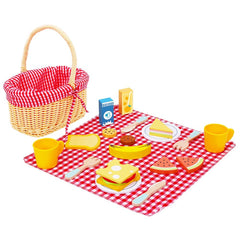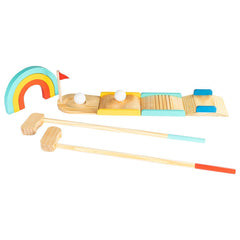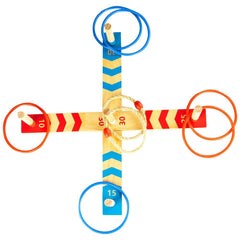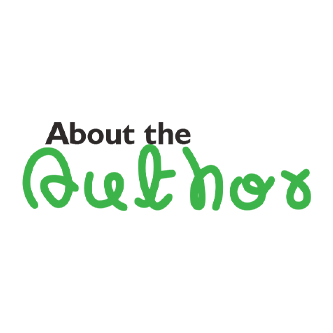It can be challenging to choose the right toy. With so many choices available, it can feel overwhelming. That’s why we’ve made it simpler for you. Whether you’re looking for a birthday present, a small reward, or just something new to keep your child occupied this summer, we’re here to help.
In this guide, you'll learn how to shop by age and price. This makes it easier to pick toys that match your child’s development and your budget. Whether it’s wooden puzzles, pretend kitchens, or learning kits — you’ll find top picks for toys for one-year-olds, two-year-olds, and three-year-olds, along with gifts for toddlers that fit every wallet.
Why Shopping by Age Matters
Each age comes with new skills and changes. A one-year-old is learning to hold and explore objects. A two-year-old is starting to sort, stack, and move with confidence. A three-year-old is full of curiosity and begins to copy the world around them.
When you shop by age, you choose toys that help children grow in the right way. These toys support important skills like hand-eye coordination, movement control, and early problem-solving. Age-based toys are also safer and better suited for your child’s needs at each stage.
Toys for One-Year-Old
For toys for one-year-olds, look for simple ones that they can easily hold and move. Babies at this stage need toys that encourage them to grasp, shake, pull, and explore. These toys also help improve strength and coordination.
Some excellent choices include the Bear Stacking Tower, which helps babies with balance and grip, and the Pull Along Buddy in animal shapes like elephants or giraffes, which motivates them to walk and move around. The Drop-it Sliding Tower – Big keeps their attention with falling discs, while the La-la Musical Set gives them something to shake, tap, and enjoy.
Other great picks are the Tooty Fruity Puzzle, with colourful shapes that attract their eyes, and the Wacky Whack-a-mole, which improves hand control and timing. These are all safe and helpful gifts for toddlers starting their play journey.
Toys for Two-Year-Olds
When choosing toys for two-year-olds, go for toys that involve sorting, matching, and pretend play. At this age, toddlers are curious and like to figure things out. They also start copying what adults do.
The Light Step Baby Walker is excellent for helping them stay balanced while walking. A Vehicle & Street Sign Set introduces them to real-world objects, and the Geometric Sorter builds early problem-solving skills. If they enjoy building, the Architect’s City Blocks offer open-ended play.
Fine motor skills can be improved with the Animal Kingdom Lacing Play, which also teaches patience. These toys give toddlers a chance to think, explore patterns, and learn through active play.
Toys for Three-Year-Olds
If you're shopping for toys for three-year-olds, choose toys that let them build or pretend. They enjoy role-playing, copying adults, and asking many questions. At this age, toys should encourage creativity and storytelling.
A perfect choice is the kid's dollhouse, which supports imaginative stories. The Lil’ Chef Kitchen Set lets children act out cooking scenes, while the Cleaning Kid Set helps them pretend to clean like grown-ups. For early math skills, try the Math-It-Up Beads abacus, which lets kids count and sort by colour or size.
The wooden train set is easy to connect and move around, helping with thinking and motor skills. DIY sets like Leo the Lion or Peggy the Pig are ideal for focus and creativity. These toys let your three-year-old express themselves and learn through pretend play.
Shop by Price
Not every toy has to be expensive. You can find safe, creative, and lasting gifts for toddlers that fit within any budget. Here's how to shop by price:
Toys Under £10:
These toys are simple and budget-friendly. They are ideal for small surprises or as travel toys. You can find wooden puzzles, shape sorters, or musical rattles in this range — all useful for early skills and easy to carry around.
Toys Between £10 and £20:
This range includes more options with added features. You can buy small pull-along animals, early walkers, or stacking sets. These toys support both movement and learning without stretching your budget.
Toys Between £20 and £30:
In this mid-range, you’ll find wooden sets, musical kits, and beginner building toys. They usually offer more activities and longer use. Many parents pick this range for birthdays or milestone gifts.
Toys Between £30 and £50:
If you want something more engaging, this range includes dollhouses, kitchen play sets, and pretend cleaning kits. These toys last longer and often support creative play and social learning.
Toys Over £50:
For premium options, look at full wooden play kitchens, large train sets, or detailed dollhouses. These are ideal for big occasions and provide long-term value. They’re also perfect for shared play and growing with your child over time.
Whether you're planning ahead or shopping last minute, our price filters help you find the right toy for your child — without the stress.
Final Thoughts
This summer, make toy shopping simple and meaningful. By choosing to shop by price and age, you give your child something that matches their needs and keeps them curious.
Whether it's toys for one-year-old babies or gifts for toddlers turning three, there's something here for every child and every budget.
Explore our full collection online and find a toy that’s just right — for now and in the memories to come.
FAQs
1. What should I look for in toys for one-year-olds?
Go for simple, safe toys that support grip, movement, and early motor skills. Avoid small parts and anything too complex.
2. Are toys for two-year-olds different from toys for three-year-olds?
Yes. Two-year-olds like sorting and matching, while three-year-olds enjoy pretend play and role-play toys that copy real life.
3. What’s a good budget for toddler toys?
You can find useful toys in every range. Many parents choose between £10 and £30 for casual gifts and over £50 for special occasions.
4. How do I know if a toy is age-appropriate?
Always check the product description. Good toy brands list the age range clearly, and you can also check for developmental goals like motor control, creativity, or problem-solving.





